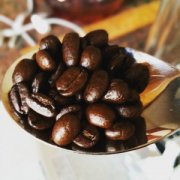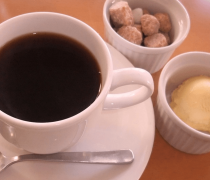What's the taste of Costa Rican yellow honey? how does Costa Rican coffee brew?

For the exchange of professional baristas, please follow the coffee workshop (Wechat public account cafe_style)
Costa Rica has a long history of cultivating coffee, but in the past 10 years, the new method of "dry" treatment has become fashionable, collectively referred to as "honey treatment", which uses the scraping machine to adjust the scraping degree of the pulp. Output with the color from light to deep (white, yellow-red-white, yellow-red-black) and show a "honey" from light to strong, with acidity, complex aroma thick feeling. Each has its own depth and advantages. Located in the Naranjo producing area of the western valley (West Valley), the Herba processing Plant (Herbazu) is well known for its own coffee plantation, as well as processing and producing raw beans for nearby estates and small coffee farmers.
Flavor: Brown sugar, floral aromas, almonds, black tea, oranges and sweet spices, mild acidity, syrup taste, good finish.
Kaddura, a single gene variant of Bourbon bourbon, was found in Brazil in 1937. It has better production capacity and disease resistance than bourbon, and the tree is shorter and easy to harvest. Unfortunately, like bourbon, it has the periodic problem of production capacity fluctuation every two years. But its adaptability is strong, do not need shade trees, direct exposure to the sun can also be vibrant, known as exposure coffee (Sun Coffee), can adapt to high-density planting, but must apply more fertilizer, increase the cost, so the initial acceptance of coffee farmers is not high.
However, soybean prices soared in the 1970s, and farmers switched to Kaddura to increase production, which was greatly promoted by the Brazilian and Colombian authorities. The acceptance of Kaddura by farmers means a great change in planting technology. Brazil and Colombia switched to high-yield, high-density sun-exposed planting. by 1999 ○, 14 million bags of coffee beans could be harvested on 1 million hectares, increasing production capacity by 60%. No wonder Kaddura, with high production capacity and high quality, has become a highly dependent variety in various producing countries.
Yellow honey flushed by hand. 15g powder, medium grinding (small Fuji ghost tooth knife 4 grinding), v60 filter cup, 88-89 degrees water temperature, 30g water injection for 27 seconds, steam for 27 seconds, water cut off to 105g water, wait for half of the water in the powder bed, then water injection, slow water injection until 225g water, no water powder ratio at 1:15, extraction time at 2:00
Kaddura is suitable for planting at a low altitude of 700m to a high altitude of 1700 m. It has a strong adaptability to altitude. The higher the altitude, the better the flavor, and the production capacity is relatively reduced. This is the fate of fine beans. In academic circles, some people call Kaddura the bourbon of dense and exposed version, which can be said to hit the nail on the head. There is also a variety of yellow Kaddura (Caturra Amarello) in Central and South America, but the wind rating is not as good as Huang bourbon.
When Kaddura is slightly roasted, the sour aroma is obvious and the whole is bright, and the sweetness can be very good if handled properly, but the mellowness of the coffee is relatively low compared with bourbon, and the cleanliness of the taste is a little less.
Kaddura usually has red berries, but there are very few areas with yellow Kaddura, such as Hawaii, where there are very few yellow Kaddura.
Factory name: Dazhen Coffee Qianjie Cafe location: Guangzhou Baoqian Street 10 manufacturer contact Information: 38364473 ingredients Table: self-baking shelf life: 90 net content: 227g packing: raw and ripe degree of coffee beans in bulk: whether coffee beans contain sugar: sugar-free origin: Costa Rican coffee types: other baking degree: moderate roasting
Costa Rica Helsar De Zarcero
Country: Costa Rica
Grade: SHB
Production area: West Valley
Baking degree: medium baking
Treatment method: yellow honey
Yellow honey treatment: about 40% of the pectin is removed; the drying method requires the most direct heat absorption, receives the most light drying, and lasts for about 8 days to reach a stable water content.
Costa Rican coffee has always been regarded as a perfect type of classic flavor, balanced, clean and mild is its tone. This batch of Yerzaro treatment plant in the western valley region is famous for its excellent natural geographical conditions and excellent regional planting management technology. the almost perfect classical flavor has a lively citrus flavor in the acidity. BlackBerry fruit aroma, acidity and taste thick, melon sweet taste smooth, drupe / micro-flower aroma, while the finish has a significant coffee flower aroma, is a taste of coffee full of Latin country style.
Variety: Kaddura, Kaduai species
Processing plant: Yerzaro processing plant
Flavor: Brown sugar, almonds, black tea
Costa Rica is the country where coffee was first introduced into Central America and has a long history. The coffee organization has a complete system from production to marketing. Because it is located in the Central American Gorge, there are many volcanoes, it has the natural advantages of sunshine and land, and the climate is reconciled by Pacific and Atlantic currents and sea breezes at the same time, the coffee produced has the characteristics of local micro-climate and soil conditions, in terms of quality and quantity, Costa Rican coffee has always been recognized by the world, and has been rated as one of the world-class high-quality coffee.
Costa Rican volcanic terrain with fertile volcanic ash, mild and suitable temperature, and stable and abundant rainfall is one of the reasons why coffee has become one of the main agricultural products in Costa Rica. The seven major producing areas are: Tarrzu, Tres Rios, Orosi, Central Valley, West Valley, Turrialba and Brunca.
Important Notice :
前街咖啡 FrontStreet Coffee has moved to new addredd:
FrontStreet Coffee Address: 315,Donghua East Road,GuangZhou
Tel:020 38364473
- Prev

Costa Rican yellow honey flavor describes which brand of Costa Rican coffee is good.
Professional barista communication please pay attention to the coffee workshop (Wechat official account cafe_style) Kaddura is a single gene variant of Bourbon bourbon, was found in Brazil in 1937, production capacity and disease resistance are better than bourbon, and the tree is shorter, easy to harvest, but like bourbon, there are periodic problems of production capacity fluctuation every two years. But it is adaptable and does not need shade trees.
- Next

Costa Rican black honey taste fragrant black honey coffee type and price
For the exchange of professional baristas, please follow the black honey made by hand in the coffee workshop (Wechat official account cafe_style). 15g powder, medium grinding (small Fuji ghost tooth cutter 4 grinding), v60 filter cup, 88-89 degrees water temperature, 30g water injection for the first time, steaming for 27 seconds, water injection to 105g water cut off, wait for the water volume of powder bed to be reduced to half and then water injection, slow water injection until 225g water, do not use water at the end.
Related
- Detailed explanation of Jadeite planting Land in Panamanian Jadeite Manor introduction to the grading system of Jadeite competitive bidding, Red bid, Green bid and Rose Summer
- Story of Coffee planting in Brenka region of Costa Rica Stonehenge Manor anaerobic heavy honey treatment of flavor mouth
- What's on the barrel of Blue Mountain Coffee beans?
- Can American coffee also pull flowers? How to use hot American style to pull out a good-looking pattern?
- Can you make a cold extract with coffee beans? What is the right proportion for cold-extracted coffee formula?
- Indonesian PWN Gold Mandrine Coffee Origin Features Flavor How to Chong? Mandolin coffee is American.
- A brief introduction to the flavor characteristics of Brazilian yellow bourbon coffee beans
- What is the effect of different water quality on the flavor of cold-extracted coffee? What kind of water is best for brewing coffee?
- Why do you think of Rose Summer whenever you mention Panamanian coffee?
- Introduction to the characteristics of authentic blue mountain coffee bean producing areas? What is the CIB Coffee Authority in Jamaica?

